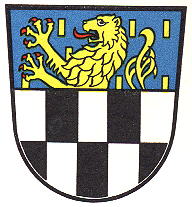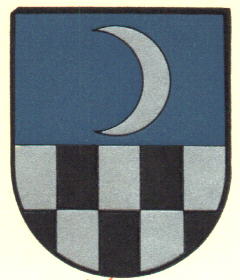Wilnsdorf: Difference between revisions
Knorrepoes (talk | contribs) m (Text replacement - "/Arms of " to "/Arms (crest) of ") |
Knorrepoes (talk | contribs) m (Text replacement - "{{media}}" to " {{de1}} {{media1}}") |
||
| Line 30: | Line 30: | ||
The lower half is derived from the arms of the Kolbe von Wilnsdorf family, who played a major role in the local history. | The lower half is derived from the arms of the Kolbe von Wilnsdorf family, who played a major role in the local history. | ||
{{ | |||
{{de1}} | |||
{{media1}} | |||
[[Civic Heraldry Literature - Germany|'''Literature''']]: Stadler, 1964-1971, 8 volumes; Meijer, 1940 | [[Civic Heraldry Literature - Germany|'''Literature''']]: Stadler, 1964-1971, 8 volumes; Meijer, 1940 | ||
Revision as of 11:43, 26 December 2022
This page is part of the German heraldry portal Deutsche Wappensammlung |
Heraldry of the World |
|
German heraldry:
|
Selected collector's items from Germany:
|
WILNSDORF
State : Nordrhein-Westfalen
District (Kreis) : Siegen-Wittgenstein (until 1975 Siegen)
Additions : 1969 Amt Netphen (partly), Amt Wilnsdorf, Anzhausen, Flammersbach, Gernsdorf, Niederdielfen, Oberdielfen, Obersdorf, Rödgen, Rinsdorf
| German | |
| English | No blazon/translation known. Please click here to send your (heraldic !) blazon or translation |
Origin/meaning
The arms were adopted in 1970 and are identical to the former Amt Wilnsdorf. In the new arms the lower half is similar as in the old arms. The upper half now shows the lion of Nassau, as the area historically belonged to the Principality Nassau-Siegen.
The previous arms of Wilnsdorf were granted on July 31, 1939.
The upper half shows a crescent, the old symbol for silver. Already in the 13th century the area was known for its silver mines.
The lower half is derived from the arms of the Kolbe von Wilnsdorf family, who played a major role in the local history.
Literature: Stadler, 1964-1971, 8 volumes; Meijer, 1940



